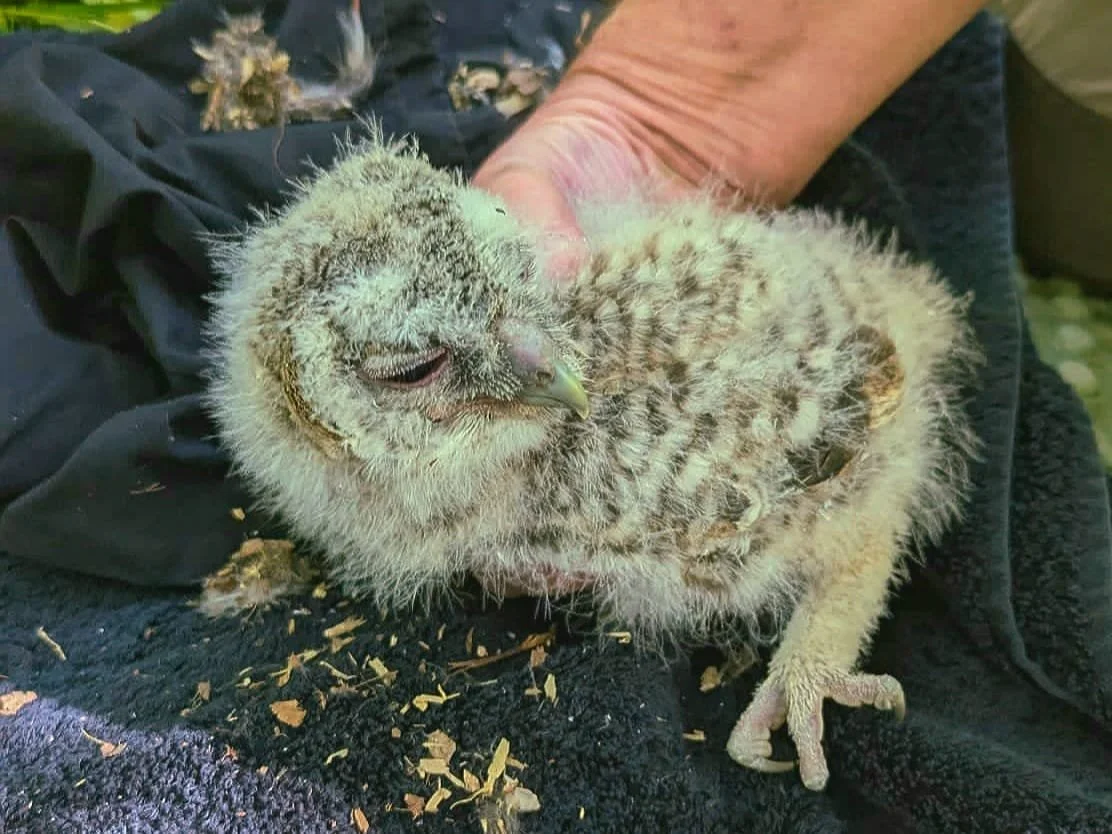A Tough Season for Owls – Prey Shortages
Every breeding season tells a different story, and this year has been a particularly tough one for our resident tawny owls, Dawn and Dusk. These familiar birds have nested close to home for several years, giving us a rare window into the challenges they face in raising their young.
In 2024, the pair enjoyed a relatively good year. Their diet was dominated by mice and rats, a plentiful and reliable food source, which allowed them to successfully raise two healthy chicks. Both young birds fledged and were ringed by a licensed ringer – a rewarding outcome that showed what can be achieved when prey is abundant.
But 2025 has painted a very different picture. With small mammal numbers crashing locally, Dawn and Dusk were forced into survival mode. Nights that last year were full of the steady rhythm of food deliveries — the soft thud of wings as a mouse or rat was brought in — were this year far quieter. Instead, the pair switched their efforts to hunting rabbits and raiding jackdaw nests. These prey items are bigger and can keep a chick going, but they’re far harder to come by. Rabbits are not always easy to catch, and the window of opportunity for jackdaw chicks is brief. Standing below the nest box on some evenings, I could sense the strain: longer gaps between food calls, and the chick waiting, hungry, for its next meal.
The result was a breeding season that felt like a struggle from beginning to end. Where 2024 brought the joy of two strong chicks being raised and fledged, this year there was only one survivor. That lone chick, ringed by a licensed ringer, was a small triumph, but the contrast with last year was stark. Watching the difference unfold with my own eyes drove home how precarious life is for these owls when their usual food supply collapses.
For barn owls, the story has been even harder to watch. Unlike tawny owls, which have a knack for switching to whatever prey they can find, barn owls are specialists. Their lives depend on voles and mice, and when those numbers fall, there’s little they can do to compensate. Reports from the wider area confirm what we’ve been fearing: 2025 is fast becoming one of the worst breeding years for barn owls in many years. Many pairs have failed outright, some never even making it to egg-laying, others losing entire broods. Sitting out at dusk where I’d normally expect to see and photograph a barn owl quartering the fields, I’ve often seen nothing.
Owls are remarkably resilient, but their survival hangs by a fine thread. Small mammal populations naturally rise and fall in cycles, but in recent years these cycles seem to be more extreme, amplified by changes in farming practices, loss of rough grassland, and the steady erosion of habitat diversity. For both tawny owls and barn owls, the difference between a thriving brood and a failed nest so often comes down to prey — to whether or not the land can support enough life to feed hungry chicks.
As I continue to follow the story of Dawn and Dusk, I’m struck by mixed emotions. Relief that they managed to raise a chick against the odds. Concern for the barn owls, and a reminder of how fragile these birds are, and how urgently we need to protect the landscapes and ecosystems that sustain them. Each season tells a new story, and 2025 is one I won’t forget in a hurry.

